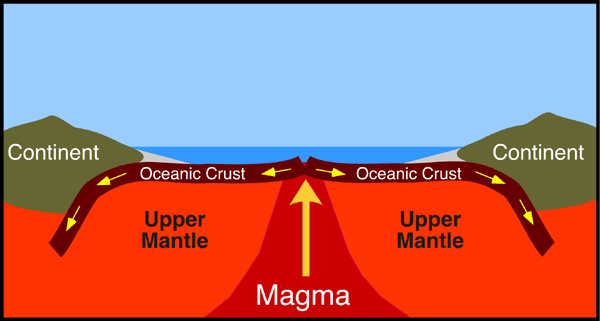Did you know that the oldest oceanic crust is closest to land?
As we know, the uppermost layer of of the earth's interior is known as the 'crust'. This crust exists in two forms, continental and oceanic. The land we are on is the upper layer of the continental crust and the ocean floor is considered the oceanic crust.
The crust is something that breaks down and regenerates.The oceanic crust is formed by the solidification of magma coming out of a series of active fissures in the middle of the ocean. These places are called 'mid oceanic ridges'. This is similar to the activity of the volcanoes we see on land. Magma from the Earth's interior comes to the ocean floor through these fissures in high temperature. This magma/lava gradually cools down and forms densely packed rocks. The oceanic crust is made of these rocks.
As this process continues, the formed crust is pushed from the center of the ocean to the sides; towards the continental crust that surrounds that ocean. Simply put, lets think of the ocean as a circle surrounded by land. Due to the continuous thrust created by the new crust in the center of the circle, it enlarges while growing towards the peripheral continental crust and exerts more pressure. Thus, we can say that the newly formed oceanic crust is in the middle of the ocean, and that the longest formed crust is closer to land.
This crust is not stable. When the pressure between the oceanic crust and the continental crust reaches an unbearable level, the oceanic crust loses contact with the continental crust and travels back to the mantle beneath the continental crust. As it travels, the rocks in the crust melt into magma due to the intense heat.
As you can see, even the ocean floor is not a permanent thing. This is another instance where it is clear that everything in nature is cyclic. 🔃
